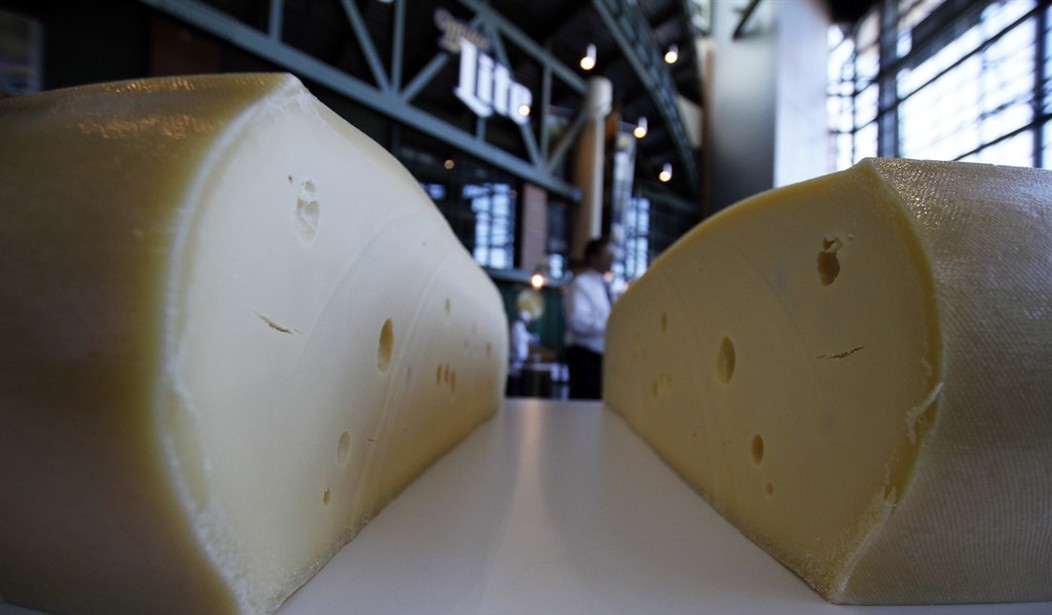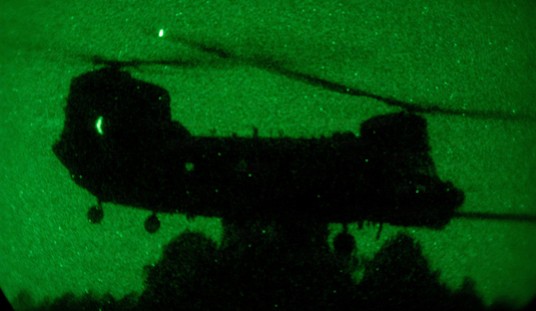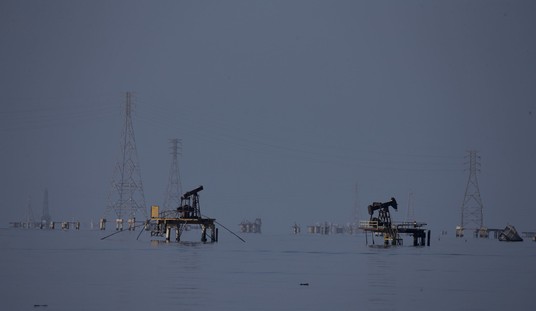In 1982, I was a young guy, married a year, with an infant at home. I had no education past high school and no military experience yet. My prospects were limited at that time, but I stubbornly declined welfare benefits and worked two jobs, one of them being on the third shift, as I was determined to take care of my young family myself.
Even so, when I heard that there was to be a giveaway of something called "government cheese," I thought, why not? I didn't know why the government had cheese or why they were giving it away, but one morning after work--tired, grubby, and unshaven--I pulled on my ragged old overcoat against the Iowa winter chill and went down to the giveaway location.
I didn't give much thought to the fact that I looked like a street bum, even when I noticed the news crew filming the event. I didn't give it any thought until late that day, when I had woken from my daytime sleep to hear the phone ringing. My wife answered it and called me into the kitchen. She handed me the handset: "It's your Grandma."
This was curious, as Grandma wasn't much of one for talking on the phone. "Grandma?"
"Honey," she said, "I saw you on the TV news just now. You looked so tired! Are you OK? Do you need anything? I can help you with groceries."
I was mortified. It wasn't that I had gone down and gotten government cheese from the giveaway. It was that my grandmother saw me on television, grubby and tired, picking up free cheese.
Now, I told you that story so I could tell you this one.
Many years went by without my giving government cheese another thought. But recently I stumbled across the fact that, indeed, there is still such a thing as government cheese. In fact, there's a whopping huge amount of it, hidden away in caves in Missouri, and what's more, according to this March 2023 article in the Science Times, the story behind government cheese is a brilliant example of how screwed up things get when the government fiddles with markets.
Missouri cheese caves are deep within the Ozark Mountains' heart under Springfield. Made of converted limestone mines, the caves are perfectly kept at 36 degrees Fahrenheit to give an ideal environment for storing stockpiles of government-owned cheese.
It all started in the 1970s when the U.S. suffered from a national dairy shortage which was made worse by 30% inflation on dairy products. In response to the economic crisis, then-President Jimmy Carter decided to spend money on the dairy industry to encourage dairy production.
The government set A [sic] new policy where a two-billion-dollar budget was allotted to subsidize dairy products over the next four years. This plan was favorable to farmers but also led them to overproduce dairy products. The farmers became motivated to produce as much dairy as they could because they knew that whatever was not sold on the market would be bought by the government.
Did you get that? The federal government, in its infinite wisdom, started subsidizing dairy farmers to produce milk. I grew up in dairy country in northeast Iowa, and I remember farmers adding to their herds and ramping up production; at that time, I didn't know why.
What do you suppose happened then? The farmers responded to the incentive by producing more milk, and more milk, and more milk. This would normally have had the effect of driving prices down, which would have disincentivized the farmers, who would have normally started producing less milk until supply and demand balanced out and things became reasonable.
But that's not what happened. What happened was, that the federal government started buying milk and, to make it storable for prolonged periods, converted it to cheese. Thus: Government cheese, and plenty of it.
Most dairy products were converted to cheese because they have a longer shelf life. By the early 1980s, the government-owned more than 500 million pounds of cheese. Because of this, the next U.S. President, Ronald Reagan, had to pass a law in 1981 enacting the public distribution of government-owned cheese.
That year, the Secretary of Agriculture John R. Block showed up to the media and announced that the government owned 60 million pieces of five-pound blocks of cheese. From then on, the term "government cheese" was born. The federal government distributed the cheese blocks through the Temporary Emergency Food Assistance Program (TEFAP).
In the years that followed, the demand for cheese declined, but the production rate remained the same as the government continued to support dairy producers. As of 2019, the collection comprises almost 1.4 billion pounds of surplus cheese in the U.S.
So, the federal government, with your tax dollars, has produced 1.4 billion pounds of cheese and has it stored in caves in Missouri.
See Related: Need a Gallon of Milk? More Americans Applying for Credit for Everyday Necessities in Joe Biden's America
Major Conservative Group Launches Bidenomics.com: 'The Website Joe Biden Doesn't Want You to See'
All the cheese is still there, presumably awaiting another Ronald Reagan, who will crack open the cheese vaults and give back to the American people the cheese that they have, after all, already paid for. The problem is, that dumping a billion-and-a-half pounds of cheese on the market will have a brutal effect on cheese prices and American dairy farmers. It's difficult to see a good way out of this mess now. Once again the federal government has tossed a bunch of taxpayer money after a problem that would have resolved itself if just left alone. Forty years later, we are still paying for it.
This entire debacle is a textbook example of why government shouldn't mess around with markets. If Jimmy Carter had just left well enough alone, the increases in dairy prices would have led to a natural, gradual increase in production, and before long, supply and demand would have balanced, as they always do when politicians just keep their fingers out of it. Dairy prices would have normalized, little kids would still have gotten their milk at lunchtime, and we taxpayers wouldn't have paid for the federal government's accumulation of 1.4 billion pounds of cheese, not to mention paying for storing it in the infamous Missouri cheese caves. (I'm pretty sure I saw the Missouri Cheese Caves open for Robert Palmer in 1984.)
I'll keep saying it until I turn blue: Markets aren't perfect, but they generally get things right if they are left alone. The problem is that the government just can't leave them alone. And this is what happens.













Join the conversation as a VIP Member